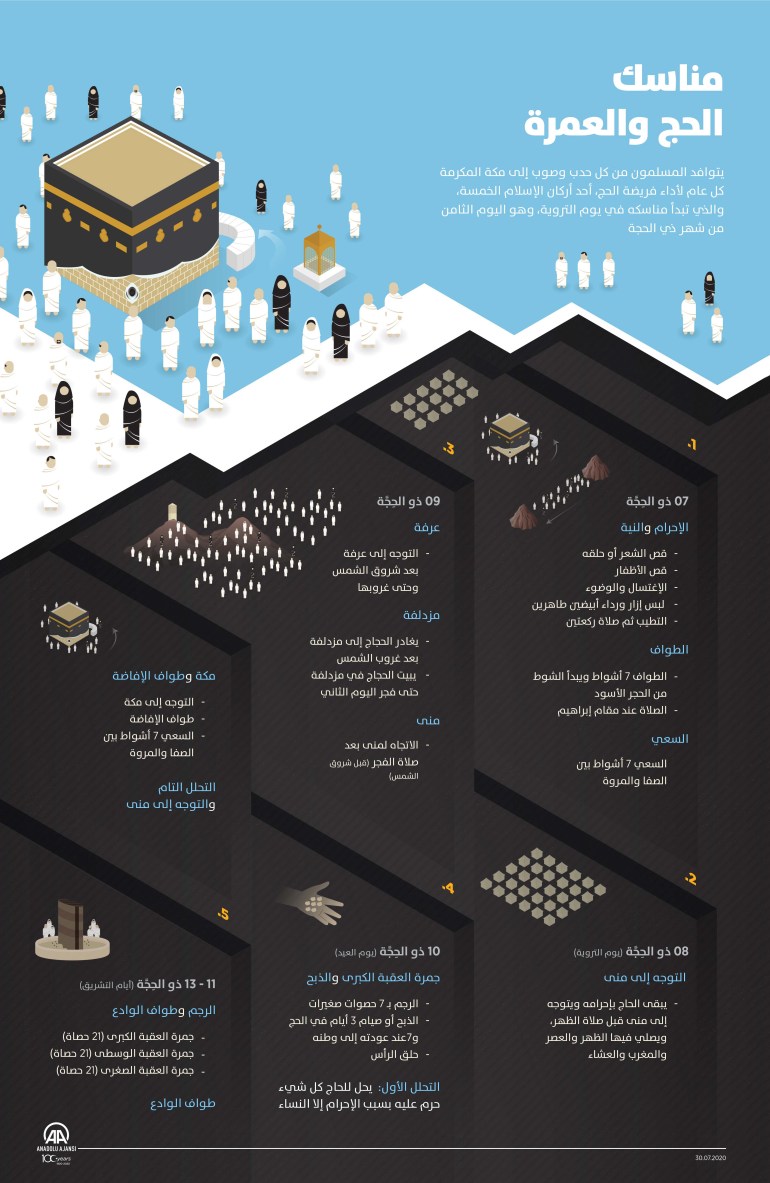Heat stroke - also called heat stroke - is a serious health condition that poses a threat to pilgrims and Umrah pilgrims, and it results from exposure to the sun or any heat source for a long time, or engaging in physical activity in a hot weather, and these things apply to pilgrims.
Among the symptoms of heatstroke are excessive sweating, nausea and dizziness, and the blow may lead to complications, including convulsions, and may harm the kidneys and brain, leading to the death of the person.
The Saudi Ministry of Health says that the places where thermal injuries - caused by heat - are frequent are:
Tawaf, especially at noon times.
The endeavor, especially when it is overcrowded and the air temperature is high.
Arafat at noon.
Mina (places of slaughter and the Jamarat), due to the long distance and crowding when throwing the Jamarat.
The Ministry, through its Hajj website, advises pilgrims with a set of health guidelines to prevent heat stroke, which are:
Drink enough fluids such as water and juices regularly.
Avoid exposure to sunlight for long periods, and use the sun umbrella when needed, and it is recommended that the umbrella be of a light color.
Avoiding excessive stress for the body, and working to take a sufficient amount of rest after performing each ritual as possible, with the aim of revitalizing the body.
Wear loose-fitting, light-colored clothing, and avoid heavy clothing.
When feeling the symptoms of heat stress or heat stroke, such as: high temperature, headache, dizziness, nausea, extreme fatigue, thirst, and cramping in the muscles of the abdomen and legs, the person should do the following:
Stay away from the sun and resort to a cool and shaded place.
Cool the body and spray it with cold water.
Take enough rest.
Take antipyretic analgesics when necessary.

